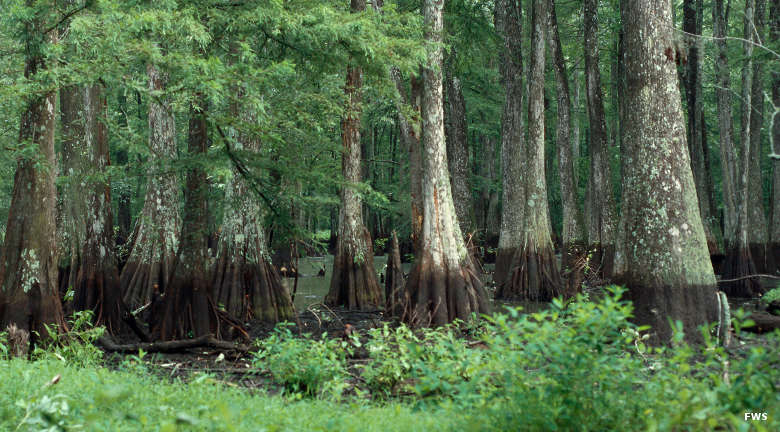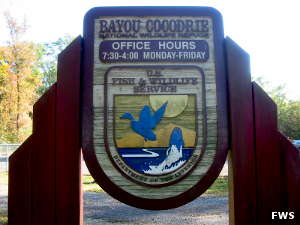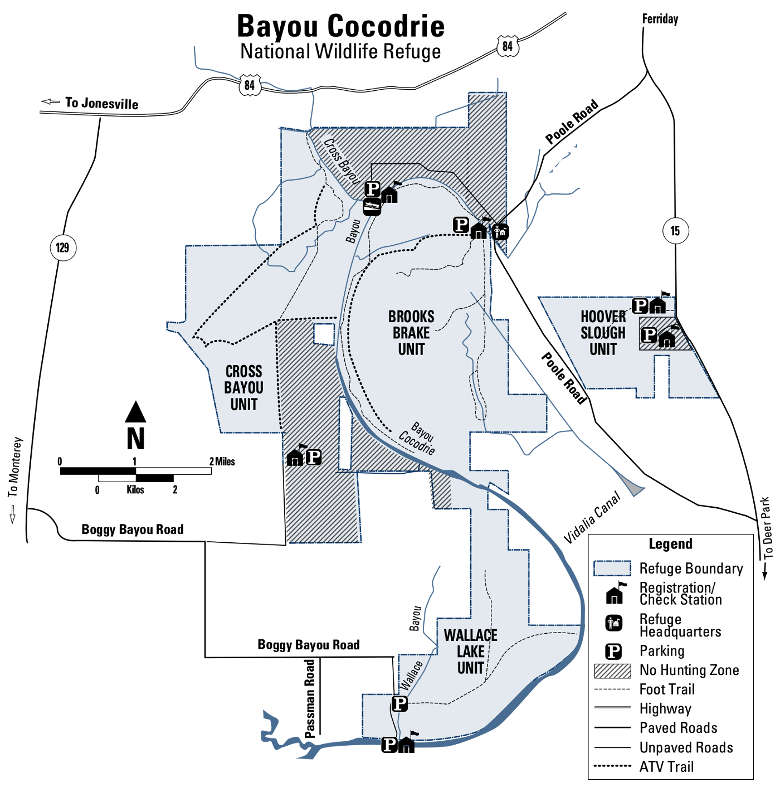Bayou Cocodrie National Wildlife Refuge

Bayou Cocodrie National Wildlife Refuge cypress swamp

The Nature Conservancy purchased an 11,403-acre tract of land from the Fisher Lumber Company (a subsidiary of General Motors) in 1991. They made a deal with US Fish & Wildlife Service to sell them the property over a five year period. Bayou Cocodrie National Wildlife Refuge was established in 1992 on that property. Time has seen the property paid off and new land added to the refuge so that today, Bayou Cocodrie NWR contains some 13,200 acres. At the center of the refuge is Bayou Cocodrie, a state-designated scenic river.
Most of the refuge is a hardwood forest of gum, ash and oak. This is probably the least disturbed stand of hardwood timber in Louisiana, the remains of a hardwood forest that once covered millions of acres along the Mississippi River corridor from Illinois to Louisiana. The remaining habitat on the refuge is mostly wetlands that support up to 186 species of birds, among them the bald eagle, mallards, pintails, shovelers, osprey, peregrine falcons and Swainson's warbler. The threatened Louisiana black bear and the endangered wood duck are also fond of the property. It was because of the numbers of wood duck found on the property that the refuge was established.
There are no fees to visit Bayou Cocodrie NWR. The property is open daily from 1/2 hour before sunrise to 1/2 hour after sunset. Hiking, wildlife observation, hunting (in season) and fishing (in season) are allowed on the refuge. Camping is allowed only for group events (Boy Scouts, environmental groups, etc.), not for private citizens (the refuge doesn't want to take business away from local private campgrounds). The primary access to the refuge is via Poole Road, a graveled-over railroad tram on which old railroad spikes come to the surface every time the road is graded - and this makes for a large number of flat tires...

Photos and map courtesy of the US Fish & Wildlife Service